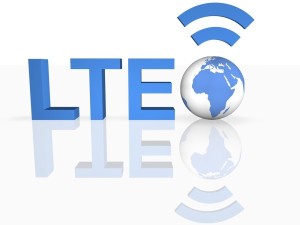 LTE is more mature than ever, with higher speeds, more device selection and more chip suppliers adding to the ecosystem for the fast mobile technology.
LTE is more mature than ever, with higher speeds, more device selection and more chip suppliers adding to the ecosystem for the fast mobile technology.
In the GCC, almost every major carrier has a LTE network in place now and countries such as Saudi have three commercial LTE networks up and running. GSMA Intelligence estimates that Saudi alone will account for more than half of all LTE connection in the Middle East by this year with the total number of LTE connections reaching over 16 million, which is about five percent of the global total.
Though growing demand for data is driving interest in LTE, the challenge facing these operators is how to monetise their investments in LTE and find a right pricing framework for mobile data profitability. With voice revenues in terminal decline, most of the operators that have invested heavily in 4G networks are looking at the new revenue streams that can developed around LTE to shore up their bottom lines.
Rakesh Lakhani, Head of MBB, Ericsson region Middle East, says data based revenue streams are the obvious answer here as the introduction of LTE services encourages users to consume more data, given the enhanced customer experience that the technology provides. “One revenue stream operators can explore is content delivery and creation – LTE users are increasingly hungry for content, and will consume more when using an LTE connection. Over-the-Top (OTT) services can also be offered, improved enterprise solutions such as mobile video conferencing and access to cloud-based applications. LTE Broadcast is another potential revenue stream for operators with efficient delivery of video to multiple users simultaneously.”
Fady Younes, Head of Service Providers, Cisco UAE, agrees that there are a variety of new revenue streams that operators can develop around LTE. In the Middle East, private networks for the energy, oil, and gas sector are seeing strong demand, providing communications, pipeline remote security, and leveraging smartphones as replacements for radios.
“As Smart Cities continue to grow throughout the Middle East, government services are being transformed by LTE. For example, LTE services supporting remote water and utility meters; smart traffic lights, security cameras, and smart street lighting; smart parking sensors and meters; and police departments using security cameras, traffic light cameras, and identification cameras,” he adds.
Tailored offerings
Should operators primarily target SME and Enterprise markets for LTE services, where the ARPU is much higher compared with consumer market?
Hassan Sabry, Wireless Business Development Lead – META Region, Alcatel-Lucent, says business-focused solutions in general offer a good way for operators to generate additional revenues from LTE. By developing a genuine business-to-business mindset and thinking of LTE service provision from the perspective of the customer, operator can well position LTE services for SME and enterprise.
“Cloud-based services also appear to be a perfect match for the high-speed, low-latency nature of LTE, as long as operators can package and sell services that are not traditional for telecoms firms. For example, several operators are bundling cloud-based software subscriptions with packages for small and medium-sized enterprises that include fixed, mobile and IP-PBX,” he says.
Lakhani from Ericsson says that though SMEs and enterprise customers can undoubtedly benefit from LTE, consumers are increasingly adopting the technology for the benefits it has in personal connectivity and communications. “Therefore, different approaches should be taken to target all consumer segments, highlighting the specific features that will appeal to them.”
Beyond just data
LTE is not all about just mobile data with the impending arrival of VoLTE, short for Voice over Long Term Evolution. VoLTE refers to something wireless customers should actually care about and will probably appropriate: better quality voice calls; the ability to use voice and data at the same time; and more network efficiency, which translates into better service.
“VoLTE will have a significant impact in 2015. Already 288 operators in 104 countries have launched LTE, and more than 60 operators are investing in VoLTE technology, through studies, trials, and various stages of network deployments, according to the Global Mobile Suppliers Association (GSA),” says Younes.
VoLTE will be a significant point of differentiation for the region’s operators, as it will provide customers with higher quality calls that connect much faster than traditional calls – connection will be in a no more than 2 seconds, compared to the 3 or more seconds required to connect on GSM or CDMA networks. The clarity of HD calls over VoLTE will be a big bonus over OTT, as it means less chance of calls dropping, of static or other interferences.
The voice over LTE market is a natural market reaction to diminishing returns on voice services. Following increased competition from OTT VoIP services, more operators will deploy VoLTE services in 2015. Some analysts expect there to be over 100 million active VoLTE subscriptions worldwide by the end of 2015.
“Operators in developed markets see VoLTE as both a means to gain competitive advantage over competition and a tool to bolster their brand strength. As the developed markets begin to move towards comprehensive LTE coverage, VoLTE will become an integral part of their value proposition,” says Sabri from Alcatel-Lucent.





